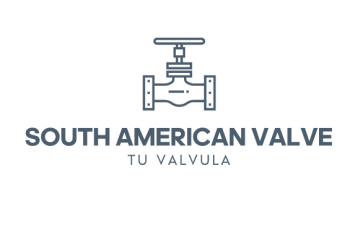Electric Control Valve
An electric control valve is a type of valve that is used to regulate the flow of a fluid or gas through a system. It works by controlling the valve’s opening and shutting with an electronic actuator. The valve may be precisely and automatically controlled by the electric actuator, which can be managed remotely or by a control system like a programmable logic controller. In industrial settings where precise and dependable control of fluid or gas flow is essential for the safe and effective operation of the process, such as in the oil and gas sector, chemical processing facilities and power generation facilities, electric control valves are frequently utilised. They come in a variety of shapes and materials to suit various purposes and can be used to regulate the flow rate, pressure, or temperature of a fluid. Overall, electric control valves provide a reliable and efficient means of controlling fluid or gas flow rates in a wide range of industrial applications. These valves offer reliable and precise control of fluid or gas flow rates, making them an important component in many industrial processes.
Types
• Electric Control Globe valve
• Electric Control Butterfly valve
• Electric Control Ball valve
• Electric Control Diaphragm valve
• Electric Control Gate valve
• Electric Control Pinch valve
• Electric Control Solenoid valve
Advantages
• Electric control valves provide highly accurate and precise control of fluid or gas flow rates, pressures, and temperatures. This allows for better process control and improved product quality.
• Electric control valves can be easily integrated into automated control systems, such as programmable logic controllers (PLCs), allowing for automated operation and remote control.
• Electric control valves can respond quickly to changes in process conditions, making them ideal for applications where rapid response times are important.
• Electric control valves can help to improve energy efficiency by allowing for more precise control of fluid or gas flow rates, which can reduce energy consumption and costs.
• Electric control valves typically require less maintenance than other types of valves, as they have fewer moving parts and are less prone to wear and tear.
• Electric control valves are available in a wide range of sizes, materials, and designs, making them suitable for a variety of applications and process conditions.
Industries and applications
• Oil and gas: Electric control valves are commonly used in the oil and gas industry for applications such as wellhead control, pipeline regulation, and gas processing.
• Chemical processing: Electric control valves are used in chemical processing plants to control the flow of chemicals through the production process and to maintain precise temperature and pressure conditions.
• Power generation: Electric control valves are used in power plants to regulate the flow of steam and other fluids through turbines and other equipment.
• Water and wastewater treatment: Electric control valves are used in water and wastewater treatment plants to regulate the flow of water and chemicals through various treatment processes.
• HVAC: Electric control valves are used in heating, ventilation, and air conditioning systems to control the flow of air and water through the system and to maintain precise temperature and humidity conditions.
Description
Available Materials: Ductile Iron Control Valve, Cast iron Control Valve(WCB, WCC, WC6) LCC, LCB, Stainless Steel (SS316, SS304), Super Duplex (F51, F53, F55)
Class: 150 to 2500
Nominal Pressure: PN10 to PN450
Medium: Air, Water, Chemical, Steam, Oil
Operations: Electro Pneumatic and Pneumatic
Size: 1/2”- 24”
Ends: Flanged, butt weld, socket weld, threaded
Electric actuator details
• Torque – 3 – 9 nm
• Operating pressure- 8 Bar
• Port Connection-NPT1.4”
• Mounting Base-ISO5211
• Temperature–20°C – +80°C
Configuration of a Pneumatic Actuator
• 4-20 amp
• Pneumatic single acting actuators
• Pneumatic double acting actuators
• Pneumatic rotary actuators
• Pneumatic Scotch and Yoke actuators
• Pressure: 228 bar
Temperature
• Standard -4°F to 200°F (-20°C to 93°C)
• Low -40°F to 176°F (-40°C to 80°C)
• High 0°F to 300°F (-18°C to 149°C)
Control Valve
Control Valve
Control Valve
Control Valve
Control Valve
Control Valve
Control Valve














